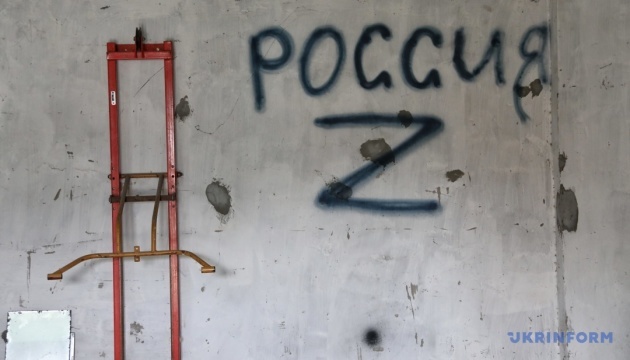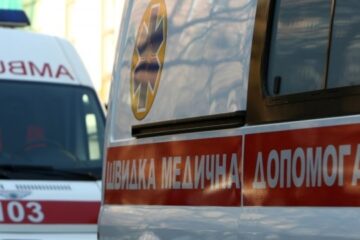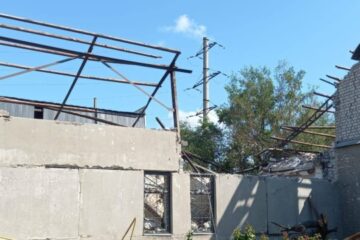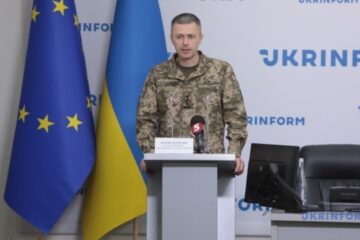
In the Kherson region, more than 1,500 individuals have been identified as victims of torture by occupying forces. Around 50 cases of civilians killed as a result of torture are currently under investigation.
Oleksii Butenko, head of the Department for Combating Crimes Committed in Armed Conflict at the Kherson Regional Prosecutor’s Office, said this in a comment to Ukrinform.
“Law enforcement agencies continue their systematic efforts to uncover crimes committed by Russian military personnel and representatives of the occupation authorities against civilians during the occupation of settlements in the Kherson region,” Butenko said.
According to him, at least 13 torture chambers have been confirmed so far — 11 located in de-occupied areas and two still in temporarily occupied territory. The largest number — seven — were found in the Kherson district, four in the Beryslav district, and one each in the Henichesk and Kakhovka districts.
“Since the beginning of the full-scale invasion, we have recorded systemic incidents of enforced disappearances involving activists, local officials, volunteers, journalists, and other civilians. People were held in inhumane conditions, subjected to torture, physical and sexual violence. There are documented cases of torture leading to death,” Butenko said.
More than 1,500 individuals have been identified as victims of torture, most of whom have already been officially recognized as such and questioned within the framework of criminal proceedings. Around 50 murder cases following torture are currently under investigation, including three deaths that occurred after victims were released but succumbed to injuries inflicted during torture.
Among the documented cases, Butenko described the story of a music teacher from occupied Kherson who refused to collaborate with the occupiers and continued teaching children online following the Ukrainian curriculum. In August 2022, Russian troops searched her home, then put bags over her and her husband’s heads and transported them to a torture site in the basement of a seized office building.
She was beaten on the head, arms, and back. They used electric wires connected to her chest. She was tortured for her pro-Ukrainian stance and pressured to adopt Russian educational standards. She was held in isolation for more than a week without food or medical aid, Butenko said.
Before releasing her, the occupiers forced her to record a coerced video and sign documents, the contents of which were not disclosed to her.
Another case involved a female volunteer who had been delivering food to people in need. She was abducted along with other civilians during her volunteer work and taken to the same torture site. The woman was beaten with hands, feet, and batons, and electrocuted through wires attached to her arms. She spent over a month in a cramped cell, starved. Before being released, the occupiers staged a mock execution and then left her and others in a field outside the city.
A Kherson-based entrepreneur was detained in August 2022 on suspicion of organizing pro-Ukrainian rallies. He was interrogated multiple times using torture. The investigation has documented cases of sexual violence, including electrocution and rape using foreign objects. After a week, he was released without any explanation or official documentation.
According to Butenko, torture was often used as a means of coercion to force civilians — particularly educators, law enforcement officers, and local government representatives — to collaborate with occupation authorities.
“In many cases, ransoms were demanded for release. The amounts reached hundreds of thousands of hryvnias. Victims or their relatives were forced to pay,” he said.
He added that most victims of torture now require professional medical and psychological care. Such assistance is being provided both in Ukraine and abroad, supported by national and international organizations to whom the victims turn.
“In addition, the Kherson Regional Prosecutor’s Office has a Victim and Witness Support Unit that accompanies individuals through all stages of the investigation. Our colleagues help with paperwork, communication, and providing the necessary support,” Butenko said.
So far, 108 individuals involved in the torture of civilians have been identified and officially charged. They include members of the Russian armed forces, FSB agents, National Guard personnel, and members of illegal armed groups.
Forty-nine indictments against 105 individuals have been submitted to court as part of 52 criminal proceedings. Ten people have already been convicted, and courts have handed down guilty verdicts.
“We will not stop. The investigation continues. And we will do everything possible to ensure that everyone who tortured our people, who abused them, is brought to justice. No crime will go unnoticed by law enforcement,” Butenko said.
Source: Over 1,500 victims of torture by Russians identified in Kherson region – prosecutor's office



